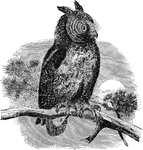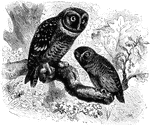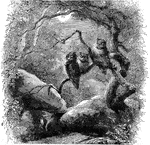Clipart tagged: ‘kowls’

Burrowing Owl
"Speotyto cunicularia hypogae'a. Burrowing Owl. Adult: Above, dull grayish-brown, profusely spotted…

Screech Owl
Scops. Little Horned Owls. Screech Owls. Like the miniature Bubo in form (all our species under a foot…

Saw-whet and Sparrow Owls
"Nyctala - Saw-whet Owls. Skull and ear-parts highly unsymmetrical, the the latter of great size, and…

Screech Owls
"Scops. Little Horned Owls. Screech Owls. Like the miniature Bubo in form (all our species under a foot…